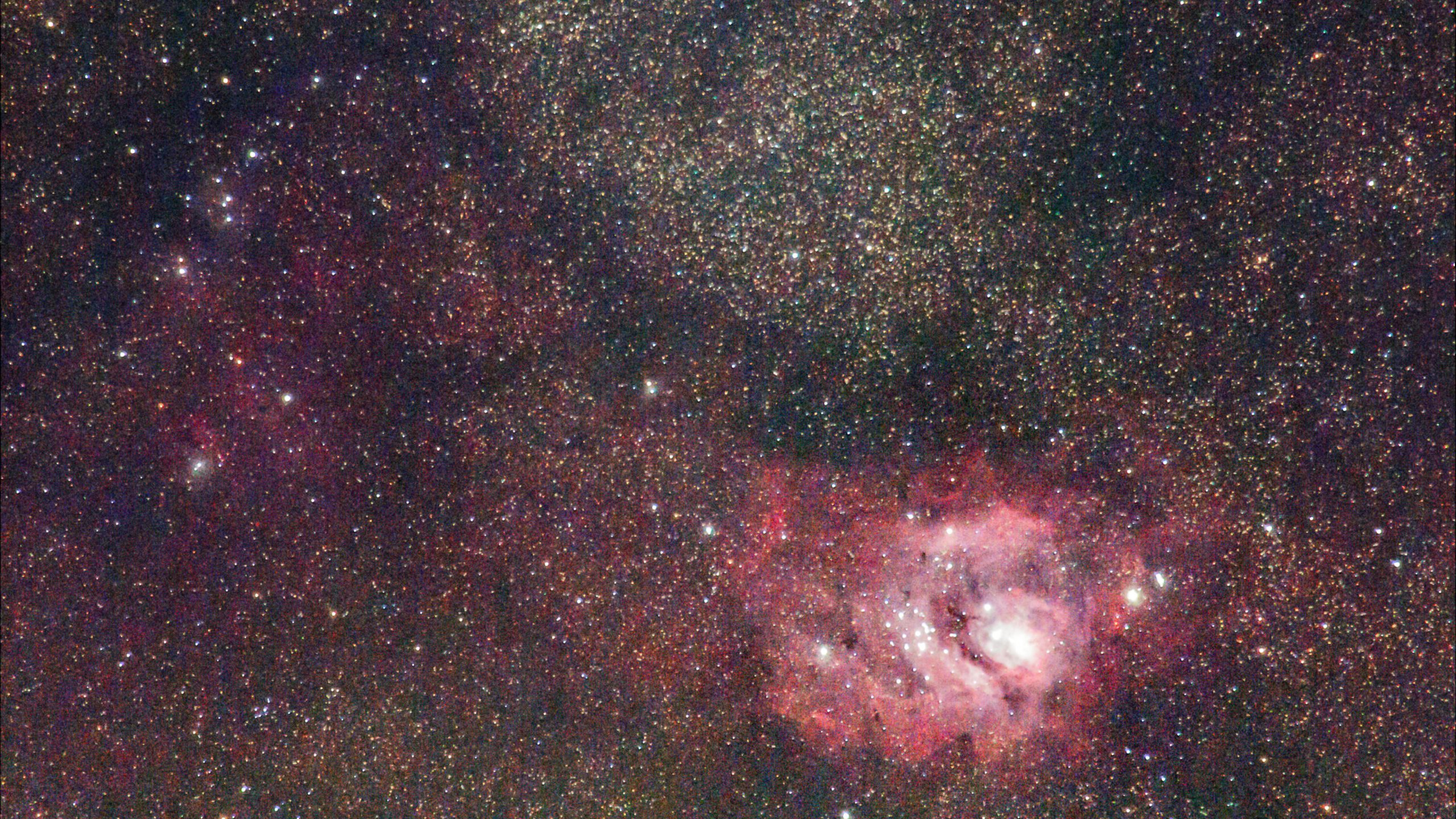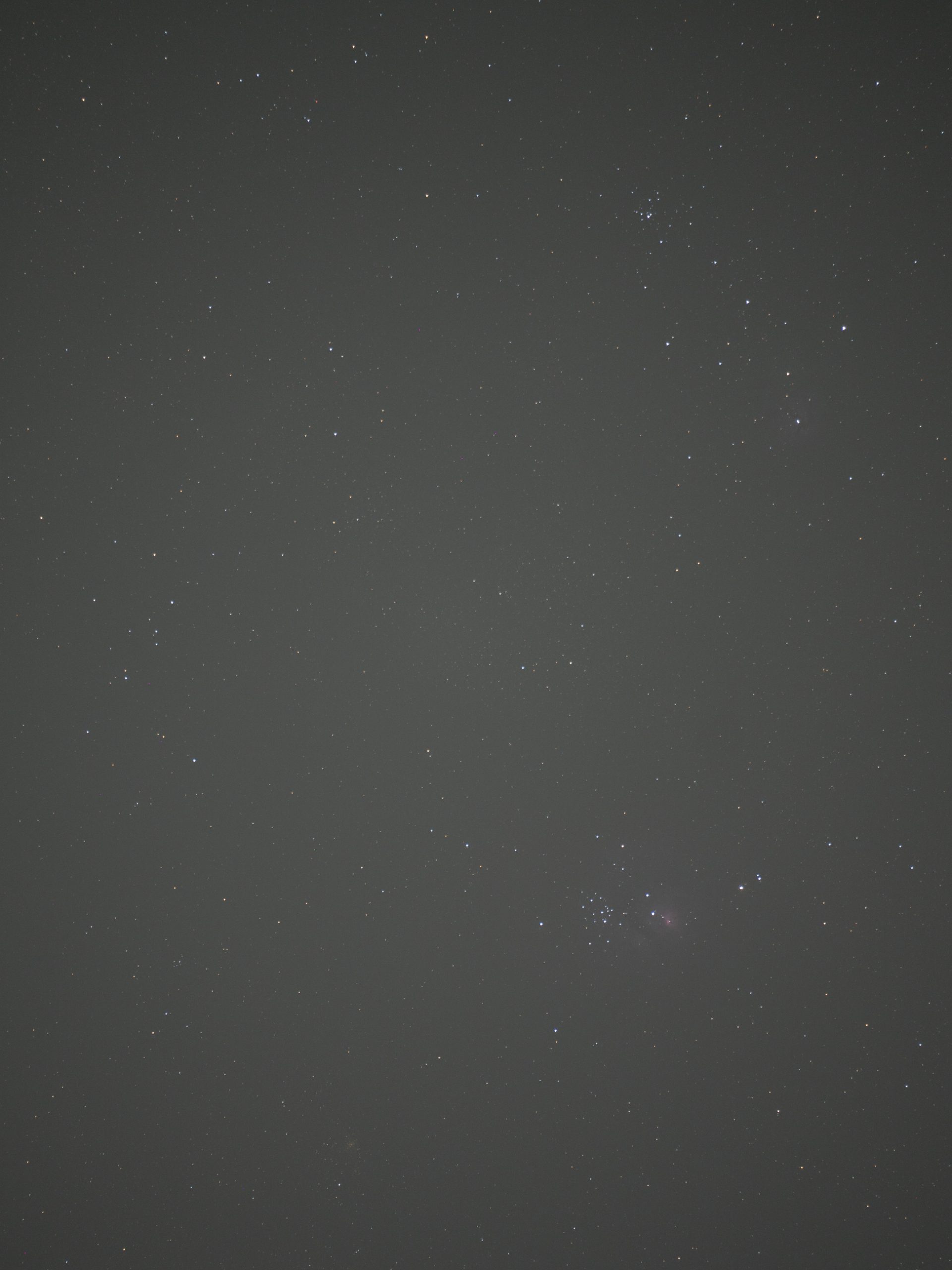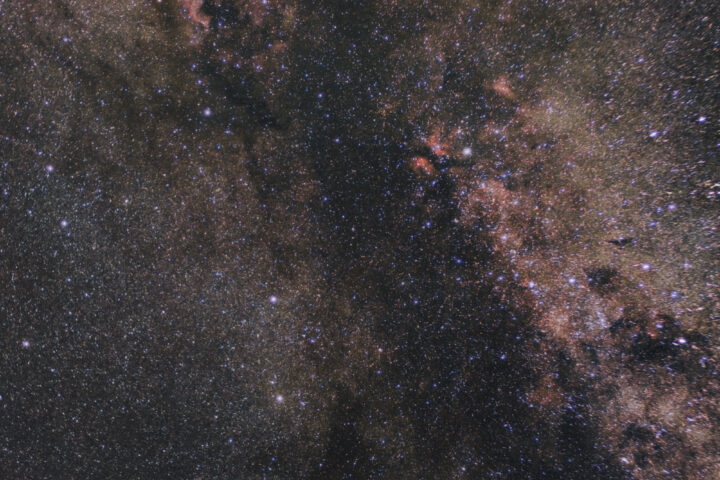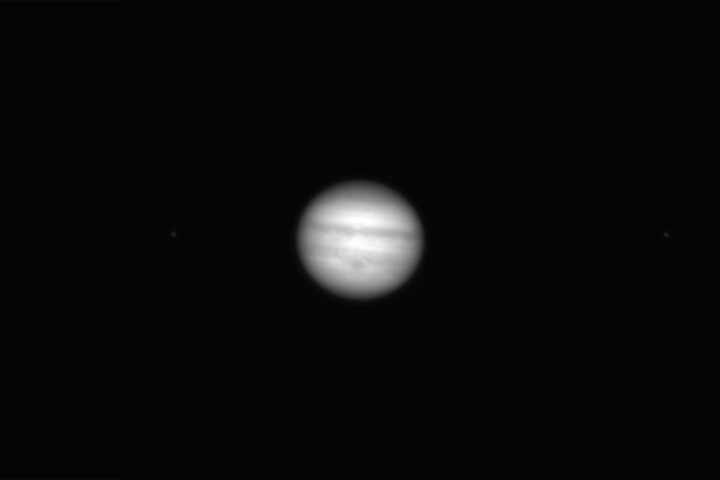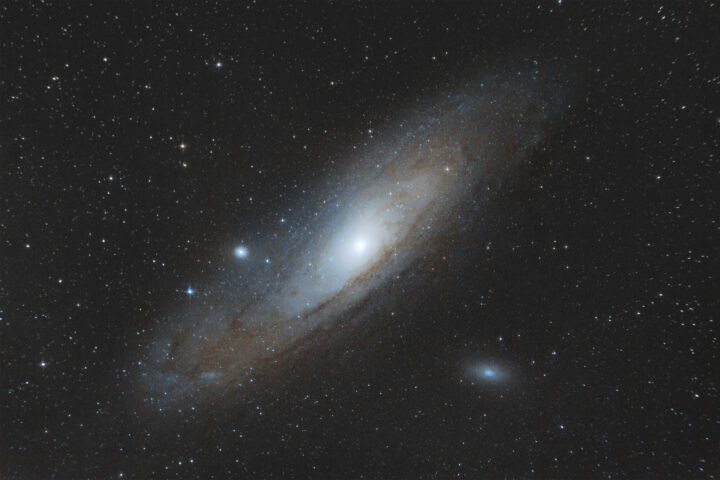I finally got my setup working as it should so, on June 15, I decided it was time to take a good picture. I was navigating the cosmos in Kstars searching for an object to image and my eye fell in the constellation Sagittarius.
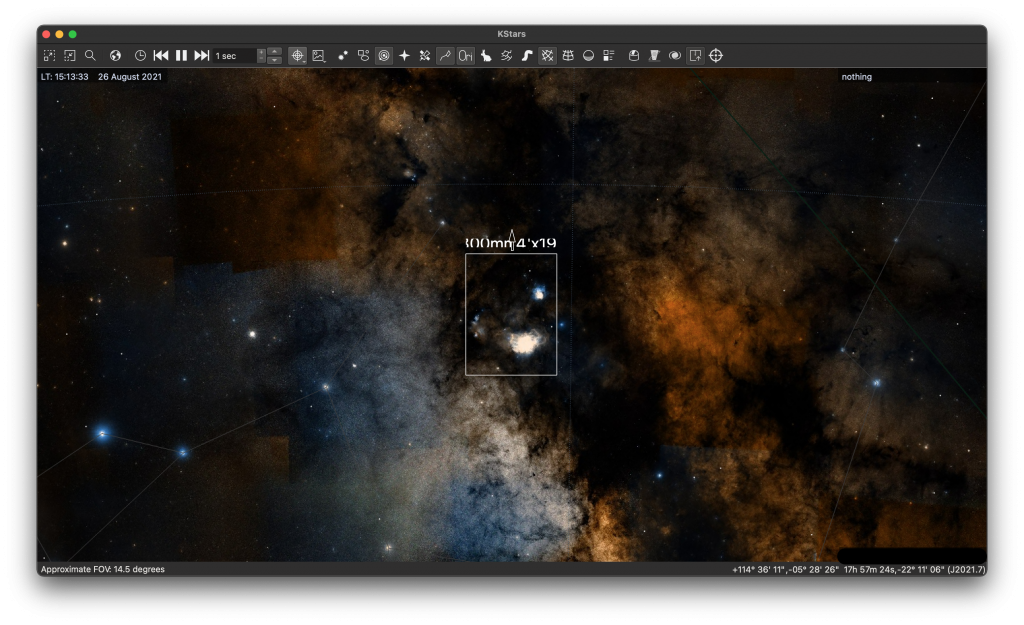
The Lagoon and Trifid nebulae
The Lagoon nebula and Trifid nebula, respectively Messier 8 and 20, are two great beginner deep sky targets. M8 is an emission nebula so bright that, under very dark skies, it can be spotted with the naked eye. M20 is an interesting object because it’s an emission nebula (red), a reflection nebula (blue) and a dark nebula all at the same time.
My image
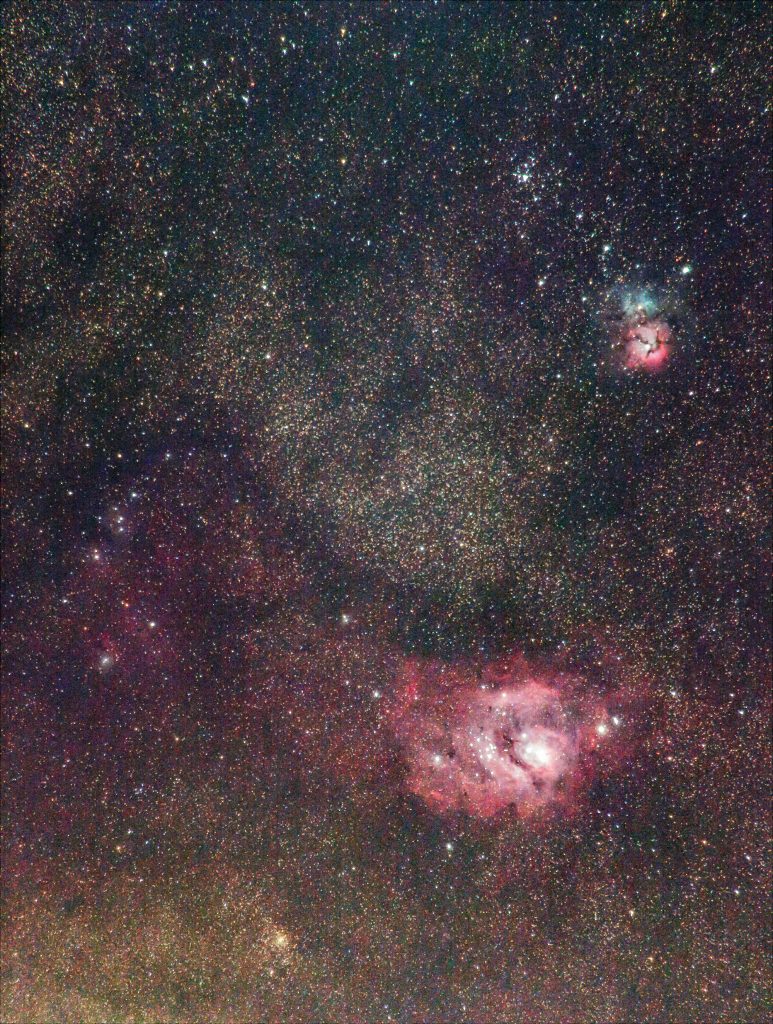
Image “specs”
CAMERA: Olympus Pen F (unmodified)
LENS: Olympus 75-300 @300mm f/6.7
MOUNT: Skywatcher EQ-3 Pro Synscan
GUIDING: QHY5L-II monochrome + Celestron Firstscope 76
EXPOSURES: 20x180s unfiltered
I am impressed by this result given the short 1 hour integration, the unmodded camera and the extreme light pollution present at the imaging location.
Choosing the focal length
Being really close to the Milky Way core, this target could have been shot at a wider focal length to capture more of the nearby nebulosity. I do have wider, faster lenses, however I chose to shoot at the highest magnification possible to avoid gradients caused by light pollution. The fact that I already had the flat frames for that lens was also a nice bonus.
Processing
I used Deep Sky Stacker to combine the 20 subs and the flat frame. I did not use dark and bias frames because I had dithered the images and used Sigma Clipping to remove hot pixels. Here are a single 3-minute exposure and the unprocessed stack.
I then processed the stack in Photoshop. I was happy to find only a couple of very subtle gradients that I easily corrected using some adjustment layers and gradient masks: shooting at 300mm really helped. I then continued editing the photo until I got to the final result.
Stock dslr vs Monochrome guide camera
As you can see from the two images above, even 180s exposures hardly reveal any nebulosity without processing. However, while looking at the live loop of my guide camera, I could see more of the nebula even though I was using 5 second exposures. There was also quite a bit more noise, but I was still amazed at how much more sensitive the guide camera was, particularly to H-alpha light.
Conclusion
I really loved taking this image, despite the challenges posed by the light pollution and the stock camera. I would really like to reshoot it one day, under darker skies, with more integration time and maybe even in narrowband.
